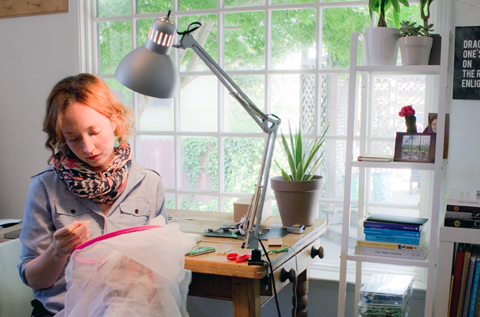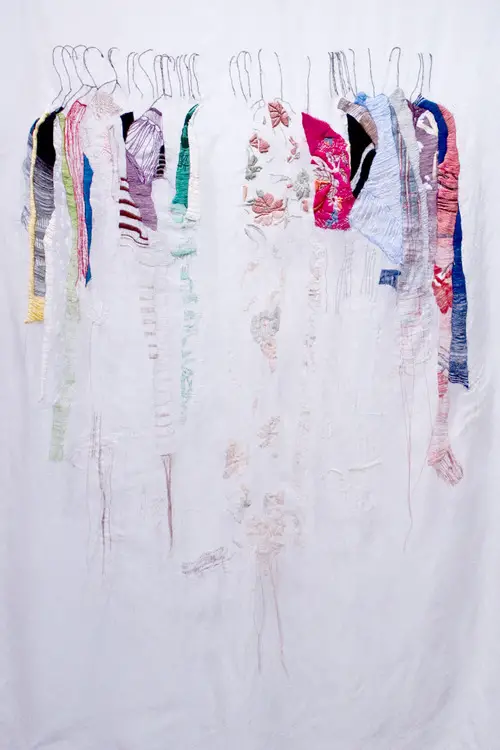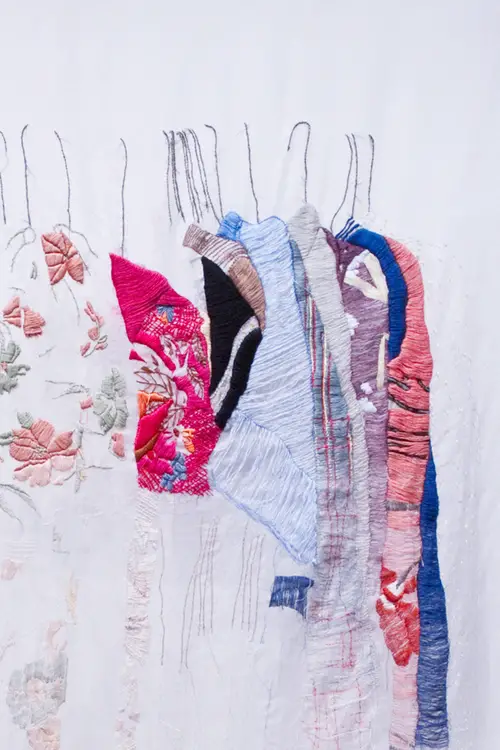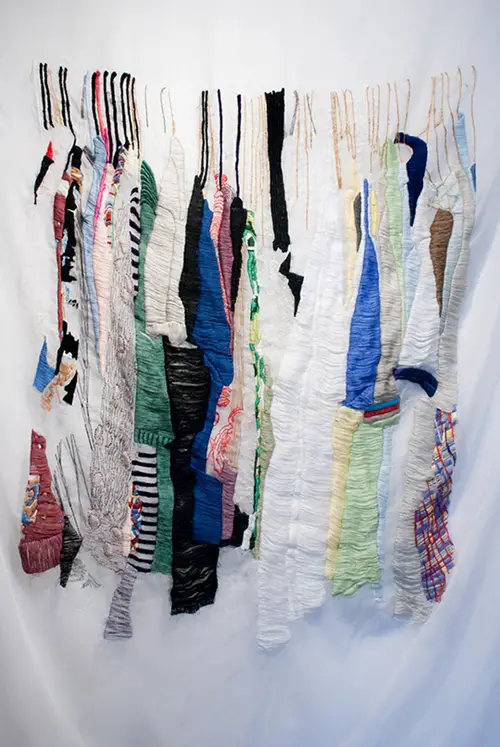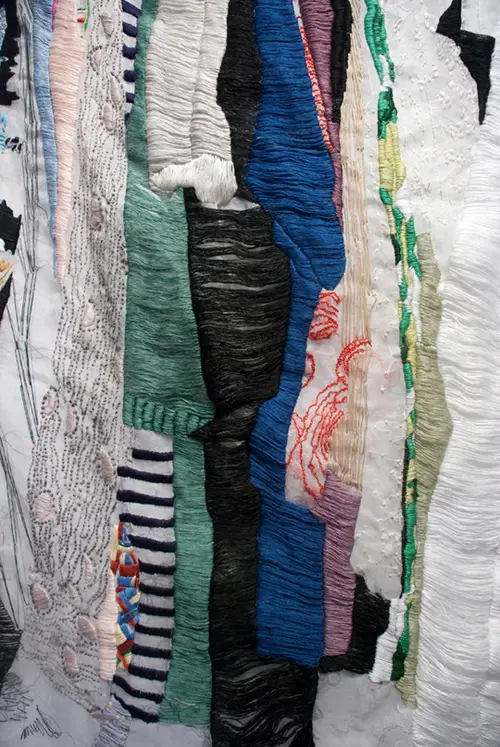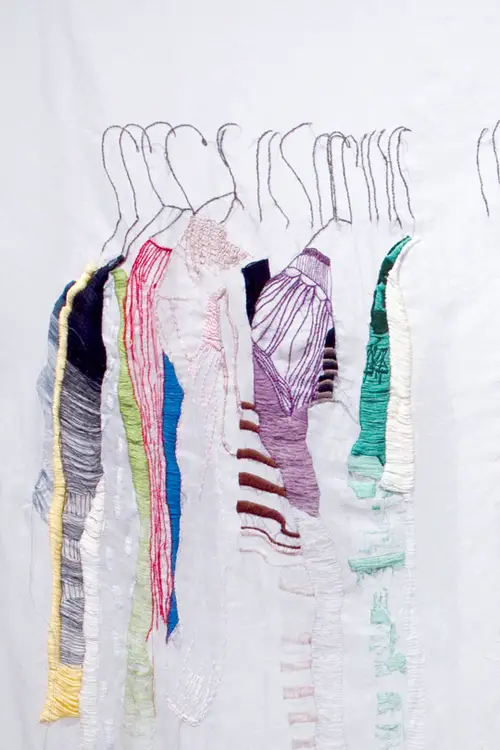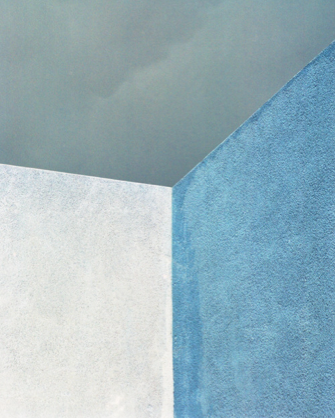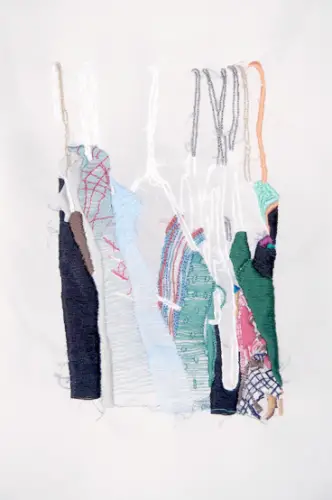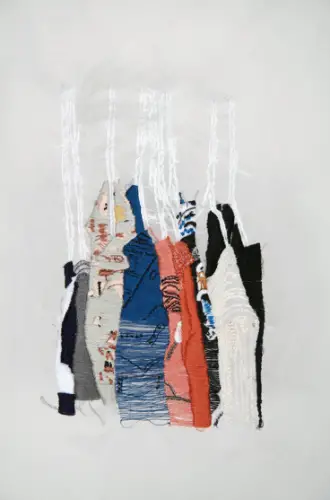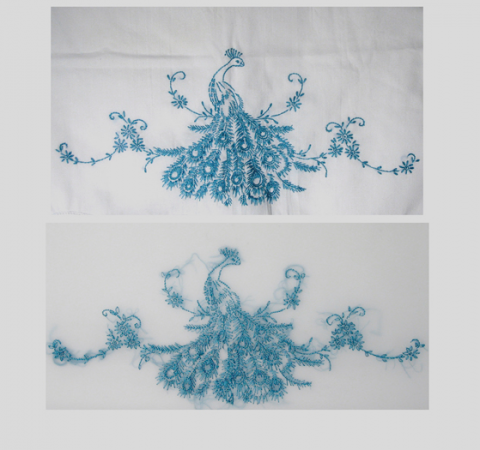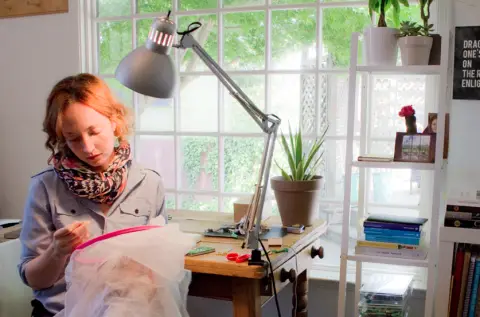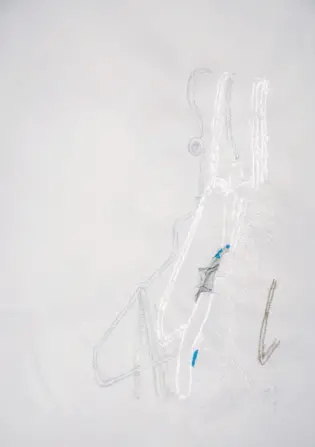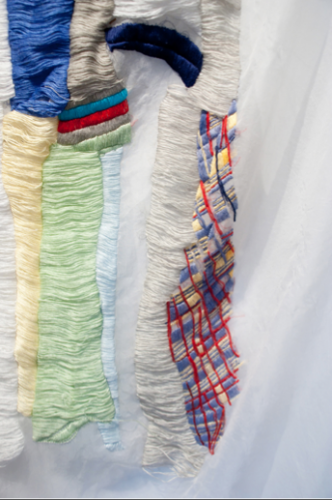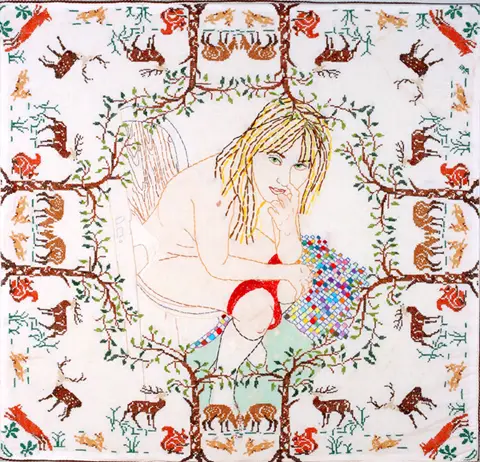
Welcome to Future Heirlooms, where we interview textile artists and explore creativity and technique.
The first time that I saw the highly detailed but simultaneously loosely rendered embroideries of Allison Watkins was in the thread in Brooklyn, NY. I was blown away by the expressive quality of her mark making, the incredible use of color, and personal nature of her subject, the closet. In many ways Allison’s work are portraits as they reveal the patterns, color and textures that people choose to adorn themselves with. Her hand and drawing quality is a portrait of whom she is as an artist. Since that first time I saw her work I have been lucky enough to see it in person again and found it just a lovely, work that I would actually love to have added to my own personal collection. So I am delighted to learn a little more about the work and the artist…
Where do you live?
I recently made a move from San Francisco to Napa to teach at a college here. At first I was nervous about leaving the city, I’d lived in San Francisco for seven years and loved being part of the art community there. But with each place brings new experiences and I think Napa is better suited for my personality the slowness of the place allows me to reflect a lot on what I’m making and I get more work done. In San Francisco there was so much social distraction, I was always going out instead of putting time into the studio.
If you had to describe your work in 3 words what would they be?
Slow. Meditative. Consuming.
What is your background/education as an artist? Are you formally trained in fibers?
I’m not trained in fibers, before entering graduate school my work consisted primarily of photographic imagery. In grad school I started to think more conceptually and found myself shifting and experimenting with techniques and ideas outside of photographic media. I basically taught myself to embroider by looking at, and replicating my grandmothers work, and also through embroidery books.
(deja vu I too started as a photographer and as I began to explore my work conceptually I came to stitching, maybe the thread of the photography makes me love her work so much?)
Can you give us a brief artist statement of your current body of work?
The work that I am making right now is called Unfoldings and is a continuation of what I’ve been doing for the last five years, making free-form thread drawings of clothing/closets. The spaces that are created move between the spaces of representation and abstraction, and I’ve found that when I show the work the viewer either sees colorful abstract shapes and forms, or they see the renderings of the clothing immediately. The abstraction of the pieces allows them to be open to different readings.
How did you come to making this body of work/what inspired it?
I remember seeing a Ghada Amer piece in graduate school and it was the first time I’d ever seen thread used in such a way. She makes these large-scale embroidered “paintings” that are reminiscent of Abstract Expressionism, that work definitely had an impact on me.
As for the concept behind the closet pieces: it was really simple, I just got the idea in my head that I wanted to see a closet embroidered. I hadn’t seen that before, so I figured I had to be the one to create it. I knew it could be a serious undertaking but I really wanted to see a space that was between my photographs (of clothing) and the original garment. Thread is an interesting medium because it can be really flat but it’s also tactile, it can be between two and three dimensions.
What is the intention of recreating the banal hidden space of the closet in such a labor intensive way?
The intention is to create a space that we aren’t totally familiar with. Clothing is something that is familiar to everyone, but rendering it in a flat space, filling in and leaving some space empty throws people off. So far I’ve chosen to leave out the structural elements of the closet, such as a door or hanging bar, to create an even more ambiguous space. As for the intensive embroidery process: I think putting a lot of time and labor into the work creates a certain type of energy that resonates with the viewer when they’re looking at the piece; it’s that thing or feeling you experience that can’t quite be defined or pinned down.
How does your photography affect your embroidered works?
I always start a piece by taking a photograph, I don’t know if it’s because I’ve worked with the camera so much, I just need that jumping off point. It helps me see. Looking through the camera is a special way of looking, it teaches you to pay attention to everything in your frame and it highlights things that may have seemed insignificant. The photograph itself isn’t important in the final stages of the pieces, the embroidery takes its place and replaces it.
I’m working on a couple of photography projects right now, independent of the embroidery. After I’ve spent a lot of time in the studio embroidering I take breaks and go outside with my camera. There’s a freedom when working with the camera, you aren’t confined to the studio and it’s really different from embroidery since it produces such immediate results.
What are your techniques and processes of making?
My work is very process oriented, I focus on the process more than the final product. I used to be really glued to initial ideas, but now I’m more inclined to see the work evolve through the process and I let the unexpected occurrences that come up lead me. I remind myself that certain techniques and realizations have been made by making mistakes.
When I first started the Closet Studies I was using more traditional stitches, stitches I’d learned from my grandmother’s embroidery and embroidery books. As the work progressed I started to change that, deciding that a more freeform approach was best for the pieces. Now the embroidered lines take on a line similar to a drawing. It can be challenging to mimic the line of a drawing with thread, it’s not as spontaneous as a drawn line- you really think about the shape and curve of the line as you stitch, you’re forced to since the process is so slow.
What do you struggle with most as an artist?
I think one struggle is to maintain curiosity in your environment and to find the time to create on a daily basis, even if it’s just for an hour. A few years back I was struggling with what to make next, and I was really over thinking it. I remember talking with an artist friend and she said, “Just make something, anything. It doesn’t have to be a masterpiece.” That really stuck with me. I think artists are under such pressure to make something original and innovative, and at the same time we have the burden of making a living. The two are often at odds with each other since people aren’t as willing to invest in new ideas/pieces that aren’t easily understood or widely accepted.
How has your work evolved since you first began working with fibers?
My process has become slower, and more patient. Working with fibers has forced me to be in the moment.
What is the next direction or step for your work?
That’s really difficult to predict. I’m still attracted to the patterns and colors on clothing, and just clothing itself. I imagine I’ll be working with this subject matter for a while.
Describe your studio and studio practice.
My studio is in a converted garage, detached from the house. I embroider in front of a window and I have the luxury of looking onto a nice garden with Japanese Maple, Oak, and Redwood trees. It’s very quiet and it’s a place where I experience those valuable moments of slowness and silence. I’m in the studio at least six hours a day- I have to put a lot of time in, otherwise the work would never get finished. I listen to podcasts and music, or talk to friends on Skype. I love modern technology.
Who are the three most inspiring people to you as an artist and why?
It’s difficult to narrow it down to three, and it seems like my inspirations are always changing. The first that comes to mind is my mom. She worked hard, always had a full-time job, but found time to make things and beautify our house. She’s creative and really good at sewing, and she’s probably the first person that I saw make something. I think it’s a gift to grow up around the handmade.
Agnes Martin is an inspiration, you can see by her work that she had such patience and also a reverence for the art making process. There’s a great video of her in Taos talking about the importance of creating alone and the power of a “vacant mind”- I relate to that.
I can’t leave Robert Irwin out, his ability to shape our perceptions is unbelievable. The book “seeing is forgetting the name of the thing one sees” opened up a new world for me, even just the title alone says so much. I like Irwin’s ability to be super prolific, and at the same time maintain a sense of humor about it all. He’s also a great storyteller.
What else do you spend your time doing?
I’m lucky to have a job here in the Bay Area, teaching photography classes at a couple of colleges. Being around students, and witnessing the discoveries that arise from their art making is really fun. I like talking about art and helping people refine and execute their ideas. Lately I’ve been working a lot in my garden, that’s important to me right now. In Napa there are so many people involved in the culinary arts and a lot of them have their own gardens. I find self-sustaining practices to be really inspiring.
Where can we see your work?
allisonwatkins.com
Thanks so much to Allison for letting us learn a little more about her work. So much of what she said resonated with me it was inspiring. Cannot wait to see more of her work.
Until next time keep your needle threaded!

